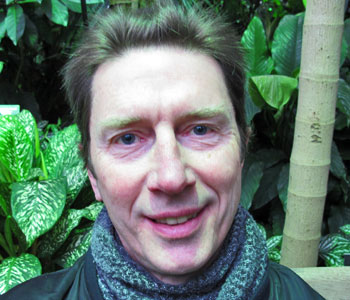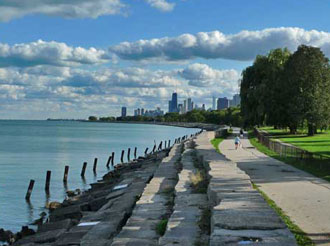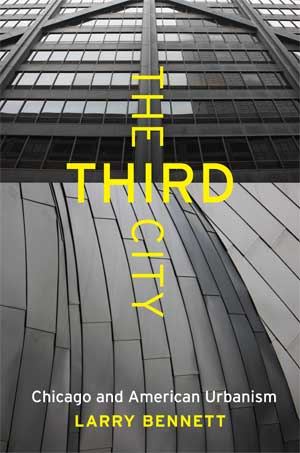
The Third City is an unconventional interpretation and explanation of contemporary Chicago.
By exploring this iconic American city, I comment on broader trends in American urbanism. And what I mean by American urbanism is the cluster of attributes that define cities in the United States. These attributes include decentralized and relatively low-density metropolitan regions, a high degree of socio-economic segmentation within metropolitan regions, continued (but not always successful) efforts to create busy downtown areas and congenial residential districts, ongoing economic challenges as cities seek to attract private investment, and again—across metropolitan areas—great disparities in the provision of public services and access to other public amenities.
Chicago is one of the United States’ most observed cities—by visitors and social scientists, as well as by local journalists, scholars, and creative writers. Rich literatures have contributed to a particular view of Chicago that resonates locally and across the United States—dynamic but culturally parochial, the site of a perpetual civil war pitting reformers against “the machine,” “the city of neighborhoods.”
In The Third City I seek to determine how relevant these images continue to be, and to the extent they should be set aside or at least modified, what are the most striking features defining the emergent Chicago. Further: how is this new Chicago—what I characterize as the third Chicago—influencing the broader shape of American urbanism?
This is a book for readers who appreciate cities. It’s especially for those observers of cities who are struck by the paradoxical character of American urbanism: revitalized downtown and near-downtown residential areas, persistent social disparities, seemingly unending suburbanization—even in the face of energy and broader environmental constraints.
“Considering, comparing, and seeking to resolve the evident contradictions between Florida’s view and Rae’s view of contemporary cities can sharpen one’s sense of the main challenges and opportunities for those of us seeking to shape better cities in the future.”
I have lived in, observed, and written about Chicago for approximately 30 years.
My academic home is the Political Science Department at DePaul University. I earned my Ph.D. in Urban Planning from Rutgers University. In my research I have examined downtown development projects, sports stadium projects, public housing, and currently, the planning and community outreach components of Chicago’s unsuccessful bid to host the 2016 Summer Olympics. In the early 1990s I conducted research both in Chicago and Sheffield, England and wrote a comparative analysis of grassroots politics in the two cities, which appeared in 1997 as a book, Neighborhood Politics: Chicago and Sheffield. I like to think of myself as a Chicago observer with a wide-ranging sensibility.
In the 30 years of my observation, this former Rustbelt industrial center—a phase in Chicago’s history that I term the “second city”—has morphed into an arts-rich global metropolis. In part, this has been a function of globalizing forces operating on a vast scale; in part it has been the result of astute local leadership. Nor should one neglect the contribution that good fortune may have played in producing Chicago’s local renaissance. My ultimate aim in writing this book has been to explain this renaissance and offer an assessment of how desirable—from a variety of standpoints—the “third city” actually is.
This book about Chicago has been shaped by the thinking of several important commentators on the American city: among the classics, Jane Jacobs and Lewis Mumford, in particular; among contemporaries, Richard Florida and Douglas Rae.
From Jacobs and Mumford I derive the notions of street-level (Jacobs) and panoramic (Mumford) urban observation, using these two ways of understanding cities to form my explanations of contemporary Chicago and Chicago’s transition from first, to second, to third city.
In a number of books, beginning with his much-celebrated The Rise of the Creative Class, Richard Florida has sketched out a path to post-industrial urban revitalization that has been vigorously debated by experts and laypersons alike.
Douglas Rae’s study of New Haven, Connecticut, suggestively subtitled “Urbanism and Its End,” offers a much more sobering prognosis for urban life—specifically, American urban life—in the coming years.
I have found that considering, comparing, and seeking to resolve the evident contradictions between Florida’s view and Rae’s view of contemporary cities can sharpen one’s sense of the main challenges and opportunities for those of us seeking to shape better cities in the future.
So, Chicago is my canvass. My conceptual preoccupations are social justice, urban livability and sustainability, and the sheer pleasure that can be offered by urban life.
The Third City’s second chapter walks the reader through a series of Chicago literatures: sociological analyses, city planning documents aiming to describe future Chicagos, contemporary fiction set in Chicago, the journalism of Mike Royko. The purpose is to illustrate some persistent “themes” in the interpretation of Chicago, pinpoint how these themes sometimes cross from, say, journalism to fiction, and ultimately, explain how the power of these themes can get in the way of coming to terms with the realities of the contemporary city.
Your “just browsing” reader might want to begin with Mike Royko, who is typically described as the quintessential Chicago observer. A lifelong resident of the city, Royko’s columns “speak” in an unvarnished Chicago dialect and present a city of straight talkers, many of them ethically challenged or racially narrow-minded. His work, at its best, combines irreverent humor and astute social observation.
Royko’s work is also willfully imaginative, as demonstrated by his tour de force “day in the life of Daley” that constitutes the opening chapter of Boss, his profile of Mayor Richard J. Daley. In these thirty or so pages, Royko moves from an account of Daley’s hour by hour movements—a narrative that is enlivened by well-chosen quotations illustrating the mayor’s view of the world—to a far more speculative inner monologue that has been invented by Royko to expose what “the Boss” was really thinking.
Though many readers construe Royko as just providing the facts and nothing more, Mike Royko’s Chicago is part reportage, and part skillful projection. Moreover, his columns during the last 10 to 15 years of his career increasingly turned to nostalgic reminiscence, reminiscence that at times seemed to lose track of the contemporaneous Chicago the older Royko thought he was observing.

“Royko’s columns ‘speak’ in an unvarnished Chicago dialect and present a city of straight talkers, many of them ethically challenged or racially narrow-minded. His work, at its best, combines irreverent humor and astute social observation.”
I have been lucky enough to pursue a profession that has allowed me to explore in great depth a personal passion, cities. I have also been lucky enough to travel widely and visit cities in many parts of the world. I am the kind of urbanite who could be happy living in many places. As it so happens, I have spent most of my adult life in Chicago. That experience, living in this city, has been a great pleasure but also the source of much intellectual stimulation.
I would like to think that The Third City will open up new insights on Chicago and provoke both residents and others to reconsider their possibly “received” sense of this city. Then there is the larger question that drives my exploration of Chicago’s particularities. What lessons from contemporary Chicago might be useful in thinking about how to form better cities both in the United States and elsewhere?


Larry Bennett teaches in the Political Science Department of DePaul University. His most recent books are two co-edited volumes, The New Chicago: A Social and Cultural Analysis (Temple University Press, 2006) and Where Are Poor People to Live?: Transforming Public Housing Communities (M.E. Sharpe, 2006). Professor Bennett is co-editor of the book series Urban Life, Landscapes, and Policy, published by Temple University Press. For many years he has served as a board member of one of Chicago’s leading neighborhood economic development non-profit organizations, The LEED Council.